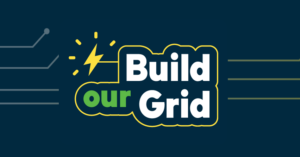The draft Programme for Government (PfG) includes more climate and environmental commitments than the previous version—281 compared to 274, according to Dr. Cara Augustenborg, who took the time to count them. But the question raised by her, other academics, environmental activists, and climate campaigners is whether this document genuinely improves on its predecessor, or if it merely proves that more doesn’t necessarily mean better. Early analysis has left them underwhelmed.
Oisín Coghlan of Friends of the Earth coined the term “climate cakeism” to describe the situation, meaning that while the government has established climate targets, it still seems to want to maintain its current pollution levels. This is evident in its recommitment to the major climate targets, such as reducing greenhouse gas emissions by 51% by 2030 and reaching net-zero emissions by 2050, all while promoting the growth of sectors like farming, aviation, and data centers.
The draft also commits to expanding public transport, greenways, cycling lanes, and walking infrastructure, while at the same time, it plans to increase investment in new roads. It promises to meet ambitious wind and solar power targets but also stresses the importance of ensuring Ireland’s energy security—suggesting the development of controversial LNG (liquefied natural gas) infrastructure, potentially reinforcing dependence on fossil fuels.
While there is a commitment to the Nature Restoration Plan required by EU law, the measures under the Nature Restoration Law will be entirely voluntary for farmers, who are the largest landowners and have the most significant impact on nature. Some new promises include expanding the school transport service from 175,000 to 275,000 students by 2030, as well as establishing an “extreme weather event assistance scheme” to replace ad hoc funding for those affected by flooding and other disasters.
On climate adaptation, the draft pledges to advance the National Coastal Change Management Strategy, which calls for preparing coastal areas for sea-level rise, coastal flooding, and land loss. Three “pathfinder” schemes are to be set up to explore solutions to these threats. However, despite these encouraging words, the overall tone of the document lacks specific actions, deadlines, or measurable targets.
The pledge to accelerate home retrofitting has been well received, particularly the promise to improve grants and financing options for low-income households. However, the plan lacks specific initiatives beyond considering the use of sustainable biofuels to reduce emissions from home boilers—something currently not feasible due to the limited availability of sustainable biofuels.
Ambiguity is a major concern for groups like the FairSeas Campaign, which has pointed out the lack of concrete plans for expanding Marine Protected Areas (MPAs). The necessary legislation to establish MPAs was delayed for so long that it was never enacted. FairSeas’ Dr. Donal Griffin stated that much more detail is needed before it can be determined if the government is serious about protecting Ireland’s seas.
There is also repetition of commitments already made in the 2020 PfG, such as the Sustainable Mobility Action Plan and the National EV Infrastructure Strategy, which are both detailed but need implementation, not re-writing. Dr. Augustenborg also noted that previous pledges, like the review of greenhouse gas emissions on a consumption basis, have reappeared without progress. If such a review takes place, it could be interesting, especially since an ESRI study showed that if Ireland’s emissions were measured by consumption rather than production, its emissions would be 74% higher.
However, the biggest concern for campaigners is the current level of emissions and the lack of concrete actions to reduce them in the draft PfG. With just five years left to meet the 51% reduction target, they argue that the document fails to outline how Ireland can get back on track. This marks a “worrying shift away from the necessary momentum and action,” said Karen Ciesielski of the Environmental Pillar. “This draft PfG does not give us any confidence that the incoming government is committed to tackling the very serious challenges of climate change and biodiversity loss,” she added. source : Caroline O’Doherty, Irish Independent


